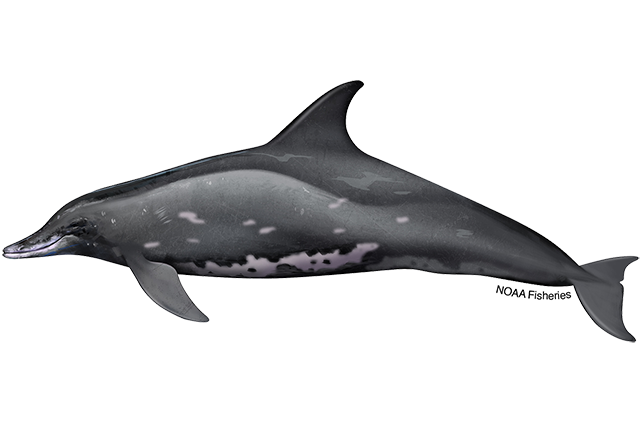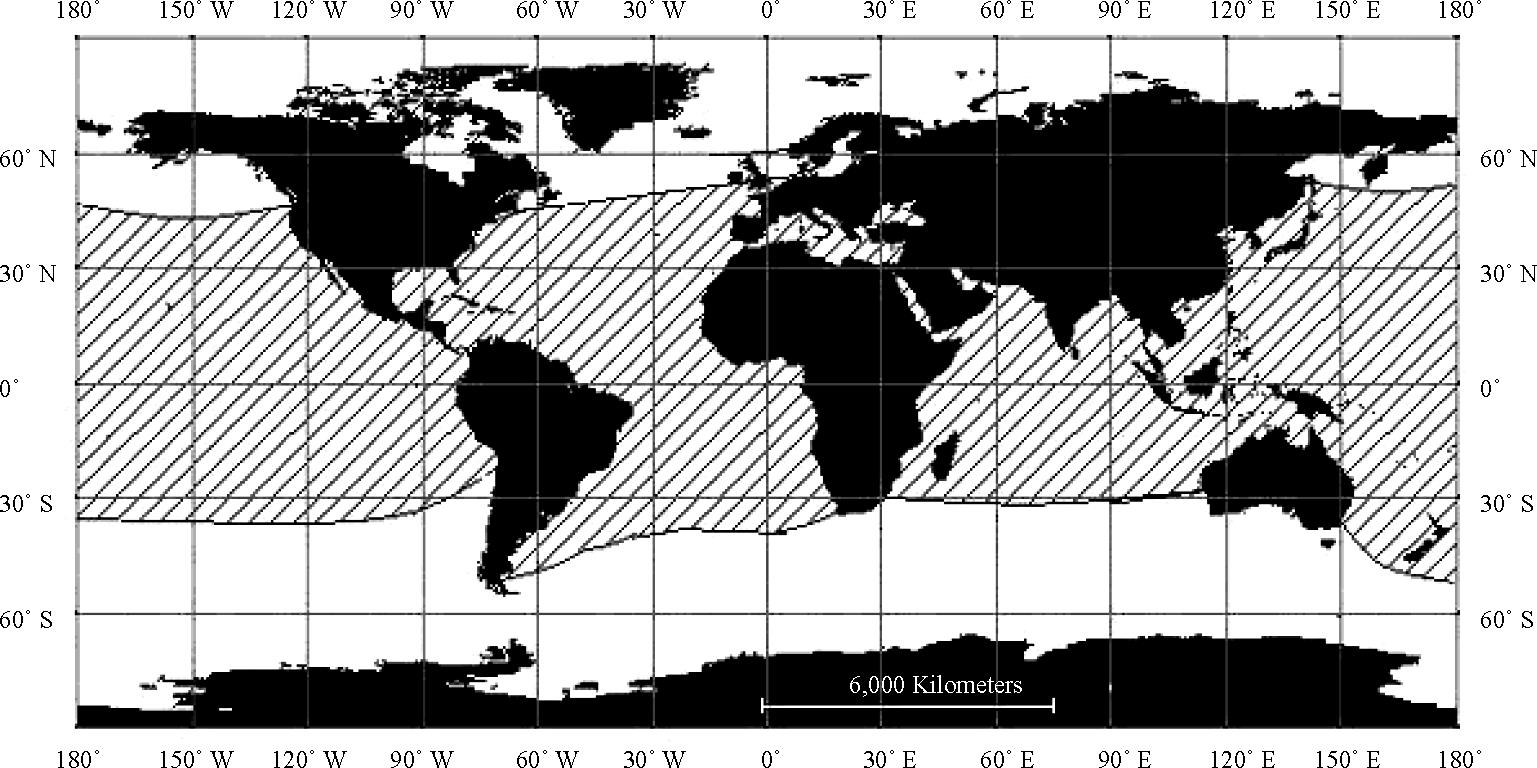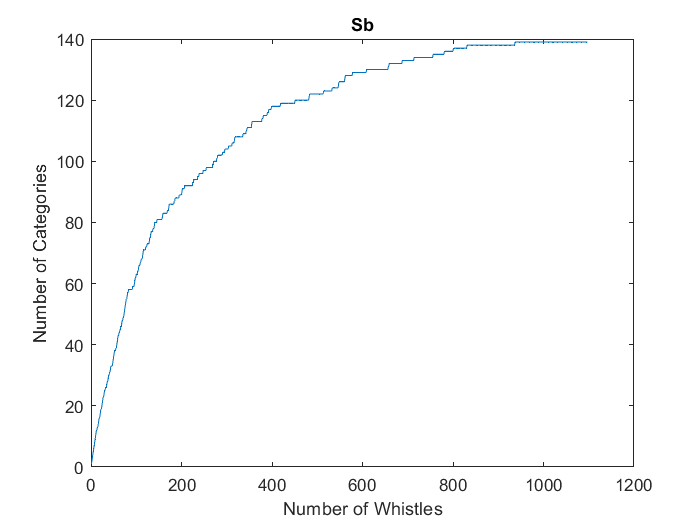Rough-toothed Dolphins
 An illustration of a rough-toothed dolphin (NOAA Fisheries, 2022)
An illustration of a rough-toothed dolphin (NOAA Fisheries, 2022)
Until this semester, the main species of study in this Vertically Integrated Project (VIP) was the rough-toothed dolphin, Steno bredanensis. This species gets its common name from its ridged teeth. Rough-toothed dolphins are generally found in warm, deep waters, such as the waters around Hawaii, although some have been seen in shallower waters closer to shore, e.g., off the coast of Brazil. They feed on small fish and cephalopods, and their strong teeth may also allow them to eat large fish. Like many dolphin species, rough-toothed dolphins are social and live in groups, usually of around 10 – 20 individuals, though groups as large as 300 have been recorded in Hawaii. As well as grouping with their own species, rough-toothed dolphins have been seen to associate with other cetacean species, such as short-finned pilot whales. All this ecological information and more can be found in an encyclopedia entry on the species by Jefferson (2009). Rough-toothed dolphins are also curious, and groups have been observed investigating boats, for example in a study by Kuczaj II and Yeater (2007).

A map showing the estimated range of rough-toothed dolphins (West, Mead, and White, 2011)
Rough-toothed dolphins are threatened both directly and indirectly by fishing. They have been taken directly in dolphin fishing operations, though the majority of deaths are caused when they are caught as bycatch in other fisheries. Rough-toothed dolphins can become entangled in tuna nets, leading to injuries and even drowning. They also take bait off fishermen’s lines, which can lead to them becoming caught on hooks. This information on rough-toothed dolphins’ interactions with fishing operations has been collated by NOAA fisheries (2022) to inform management practices. This information also comes from Jefferson (2009), who notes that there are very few studies on conservation of this species, meaning accurate assessments of populations are not possible. It is therefore vital that further research is conducted to assess population status and ensure conservation efforts are based on the best knowledge possible.
Cetaceans make extensive use of sound for communication and sensing, as light and scent do not travel well underwater. Rough-toothed dolphins are no exception. This means they can be sensitive to noise, such as boats or industrial and military activities. This anthropogenic noise can cause disturbance, distress, and even hearing loss in rough-toothed dolphins and other cetaceans. Cetaceans’ use of sound means acoustic monitoring has great utility, allowing for simpler, less-expensive studies than visual methods such as shipboard surveys. This information comes from a chapter written by one of the staff members working on this project, Janik (2009), and more detail on cetacean’s use of sound and how acoustic study methods are used can be found in this chapter. As well as population studies, acoustic methods can be used for monitoring after disasters or accidents. A study by Amorim et al. (2022) provides a good example of this. In 2015, the Fundão dam in Brazil collapsed, releasing 50 million m3 of iron ore tailings. The tailings reached the Atlantic ocean, where the potential ecological effects had to be monitored. Acoustic methods were used to identify cetacean species present in the area, which included rough-toothed dolphins. This type of acoustic research was very important for determining species distribution and abundance in the area, which can be used to inform conservation and clean-up efforts.
For the last 3 years, this VIP has worked on extracting, tracing, and categorizing rough-toothed dolphin whistles from acoustic recordings. Using a program called ARTwarp, which assesses similarity of whistles based on parameters like whistle length and frequencies, the project has identified around 139 different types of whistle. More information can be found on our methods page. Sorting whistles into types provides a more thorough understanding of the range of whistles rough-toothed dolphins can produce—their ‘whistle repertoire’. This will allow more effective species classification from passive acoustic monitoring (PAM) and permit better population assessments, which can inform management and conservation efforts.

A discovery curve showing how the number of whistle categories has increased with number of whistles analysed to plateau at 139.
References
Amorim, T.O.S. et al. (2022) ‘Acoustic identification and classification of four dolphin species in the Brazilian marine area affected by the largest tailings dam failure disaster’, The Journal of the Acoustical Society of America, 152(6), pp. 3204–3215. Available at: https://doi.org/10.1121/10.0016358.
Janik, V.M. (2009) ‘Chapter 4 Acoustic Communication in Delphinids’, in Advances in the Study of Behavior. Academic Press, pp. 123–157. Available at: https://doi.org/10.1016/S0065-3454(09)40004-4.
Jefferson, T.A. (2009) ‘Rough-Toothed Dolphin: Steno bredanensis’, in W.F. Perrin, B. Würsig, and J.G.M. Thewissen (eds) Encyclopedia of Marine Mammals (Second Edition). London: Academic Press, pp. 990–992. Available at: https://doi.org/10.1016/B978-0-12-373553-9.00227-3.
Kuczaj II, S.A. and Yeater, D.B. (2007) ‘Observations of rough-toothed dolphins (Steno bredanensis) off the coast of Utila, Honduras’, Journal of the Marine Biological Association of the United Kingdom. 2007/02/26 edn, 87(1), pp. 141–148. Available at: https://doi.org/10.1017/S0025315407054999.
NOAA (2022) Rough-Toothed Dolphin | NOAA Fisheries, NOAA. Available at: https://www.fisheries.noaa.gov/species/rough-toothed-dolphin (Accessed: 9 March 2023).
West, K.L., Mead, J.G. and White, W. (2011) ‘Steno bredanensis (Cetacea: Delphinidae)’, Mammalian Species, 43(1), pp. 177–189. Available at: https://doi.org/10.1644/886.1.